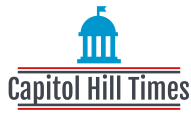Many theories exist about who is responsible for inflation. It is the President. It is the former president. It’s Chains of supply. It’s Russia. It’s Companies.
Inflation now at 8.5PercentIt is important to understand who is responsible. With underlying issues that range from COVID-19 economic consequences and central bank decision making to the policies implemented by recent presidents, and the interconnectedness and globalization of the economy, there is plenty to blame.
A general increase in the price of goods or services is called inflation. Two reasons can cause inflation: an increase of the money supply relative to the supply or a rise in the demand for goods relative the supply. While not all price increases are evidence of inflation—prices also fluctuate based on supply and demand—a sustained increase in prices All across the boardThis is evidence of one of these phenomena.
One Claim—that corporate greed causes inflation—can be easily dismissed as it offers little explanation for why it didn’t cause inflation in the past. And the argument’s biggest proponents—Sen. Elizabeth Warren (D–Mass.) and Sen. Bernie Sanders (D–Vt.) chief among them—never credit corporate generosity for lower prices. Similar, ClaimIt is false to claim that President Joe Biden is the sole culprit. Inflation’s roots are many and unrelated to partisan narratives.
However, that doesn’t mean Biden hasn’t been a crucial player. Inflation The summitHis election was shortly followed by a steady stream of cash inflows. There is no stopping him. American Rescue Plan (ARP), his most significant achievement was to pump more money into an overheated economic system when it couldn’t keep up with supply chains. It spent almost $22 million. One trillionThe output gap was smaller than $400 Billions. This is almost five times the amount of what it was before. Not requiredIt was clear that the results were predictable. Harvard expert Lawrence Summers has been sounding the alarm. alarmFor more than a year.
However, Biden’s large spending bills were not enacted right away. Although the ARP was not signed until March 2021 and most of its spending took place over several months, it did get enacted. Likewise, the Infrastructure Investment and Jobs Act—another commonly Referred source of inflationary pressure—didn’t pass until last November, and its spending won’t PeakUntil 2026 Außerdem gibt es: StudyChicago Federal Reserve determined that recent inflation can be partly explained by ARP.
These findings should not be surprising, as significant spending occurred before Biden reached the Oval Office. Even before the Coronavirus Aid, Relief, and Economic Security (CARES) Act—the most expensive bill signed by Donald Trump—the federal government was spending UnprecedentedThe COVID-19 amount. The act provided cash payments for most Americans as well as housing assistance and increased unemployment checks. It also paused student loan repayments. Biden recently extended this pause. Although these actions were necessary, they are not required today. BeginTrump, and contribute to inflationary pressures right now.
Trump was extravagant, even ignoring the pandemic. SpendingMore in four years than President Barack Obama achieved in eight. Biden is igniting the flames for inflation. Trump took the lit match and lit it.
However, Democratic policies could have been more effective. They advocated for greater generosity.enhanced unemployment,” FlushingStates with near- and far-finance, as well as cash.PermanentParents receive stimulus payments. Although only a few of the ideas they had were implemented, the money was not lost and many more people could spend it. blue-state Governors.
While the price of oil continues to rise, so did the election for 2020. ExpansionThe expansion of the money supply was already long ago. Because inflation cannot be understood without the Federal Reserve, this is crucial. Jerome Powell, the Federal Open Market Committee and no president can control interest rates or dollar circulation. Powell acknowledged last year that inflation was a problem. Completely wrong.
Not only is the Federal Reserve at fault, but so are other central banks. As global governments lavished generously for pandemic relief efforts, so does the risk of recessionCentral banks around the globe have been created hesitantTo raise interest rates to respond to increasing prices. The European Central Bank Keep it upSince then, rates have been consistent 2016.. In the meantime, United Kingdom Rates raisedTo where they were before the pandemic but just like the Federal Reserve, Brits Lower interest rates During the past two years.
Although cheap credit is sometimes necessary when countries are facing unexpected shocks it quickly becomes problematic once there’s a lot of demand. Roars back. Even if policymakers and central banks didn’t follow each other, it’s reasonable to anticipate inflation rising now.
The Eurozone is experiencing inflation SitsPrices in Great Britain start at £7.5% Similar. To an extent, these phenomena occur independent of the U.S.—it’s ridiculous to suggest Biden’s inauguration sparked inflation nearly 3,600 miles away. Just as Russia’s war can ImpactAmerican can increase the cost of fuel and wheat. ExportGlobal inflation in an interconnected economy
Now, breakeven inflation is possible highestAlthough it has happened in 21 century, the blame for any single person or policy is only part of the overall economic picture. Realism is not what it seems. Many actions—some recent and some dating back five years—primed the pump and escalated a worldwide run-up in prices.
It’s impossible to solve the current problem by one individual, just as it is unlikely that one individual caused it. If the pandemic is over, central banks ease money policies and the private sector boosts production. The supply chain stabilizes. Finally, inflation will stop.

